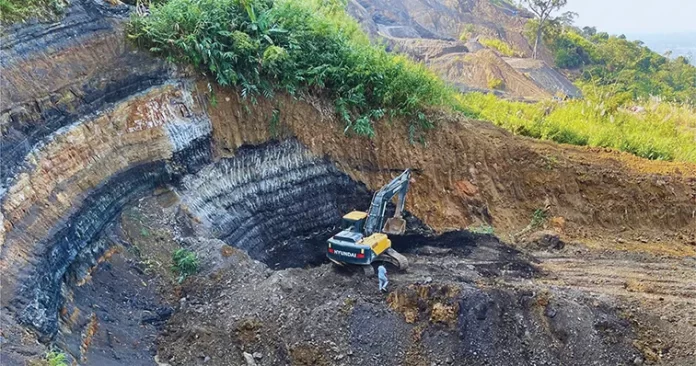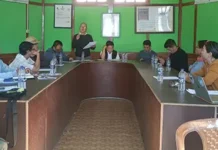[ Samshum Changmi ]
KHARSANG, 7 Dec: The union coal ministry recently announced the auction of two coal blocks located in Changlang district as part of the 11th round of commercial coal mine auctions.
These blocks are among 27 coal blocks put up for auction across the country in this round. This development comes a year after the Namchik-Namphuk coal mine (central block) was auctioned off for commercial coal mining.
The two newly listed blocks – Namchik east and Namchik west – are extensions of the Namchik-Namphuk coal field located in Kharsang. According to official estimates, these blocks collectively contain 30.96 million tonnes (mt) of geological coal reserves, spanning an area of 6.063 square kilometres (600 hectares). Namchik east holds 22.165 mt of reserves across 5.028 sq kms, while Namchik west contains 8.8 mt within 1.035 sq km.
Additionally, the Namchik-Namphuk central block spans an area of 0.92 square kilometres, boasting a significant geological coal reserve of 14.97 mt. The geological mapping covers 1.45 sq km, with 45% of the area under green cover. The project will result in felling of over 204 mature trees and displacement of over 20 households. This coal mining project was awarded to M/s Coal Pulz Pvt Ltd in November 2023.
The ministry in a press release claimed that “mines falling under protected areas, wildlife sanctuaries, critical habitats, forests with more than 40% cover, and heavily built-up areas have been excluded.” However, according to the Forest Survey of India (FSI), the Namchik east block alone holds an 82% green cover. In fact the proposed opencast mining project is likely to cause significant and irreversible disruption to the region’s environmental and social fabric.
The proposed project entails the felling of approximately 10,000 trees to make way for mining operations, posing a grave threat to the area’s dense forests and biodiversity.
Moreover, the impact is not limited to deforestation. Notably, five villages – Longtom-I, Longtom-II, Panchun, Oil India Housing Complex, and Longkan (under the central block) – are projected to be directly affected by mining activities, potentially displacing around 2,000 indigenous communities.
Furthermore, the destruction will encompass existing vegetation, including tea plantations, areca nut groves, and paddy fields, leading to significant economic losses for local farmers.
The data provided by the ministry stated that since the introduction of commercial coal mining in 2020, the union coal ministry has auctioned 113 coal mines as of 27 November, 2024, with the majority of these being allocated to private companies. Though the government touts these auctions as a measure to boost economic growth and reduce dependency on coal imports, it can be argue that this aggressive push towards coal extraction undermines it’s commitment to achieving its climate goals and transitioning to renewable energy sources, as pledged under international agreements like the Paris Accord.
Moreover, the BJP-led state government has already come under fire for other controversial projects, such as the 11,000 mw Siang upper multipurpose project on the Siang river, which has sparked significant backlash from indigenous communities in the Siang belt. The government has been slammed for policies disproportionately benefitting corporate interests while marginalising indigenous communities and jeopardising fragile ecosystems.
Now, the least the government can do is actively engage with the central government to ensure the protection of indigenous communities and their ancestral lands. Proposed opencast coal mining projects in the Namchik east and west blocks must not be permitted until the rehabilitation of affected indigenous communities is guaranteed.
Furthermore, critical sampling such as enumeration of trees and comprehensive ecological assessments with sufficient sampling intensity must be undertaken, prioritising long-term ecological sustainability in the region.





